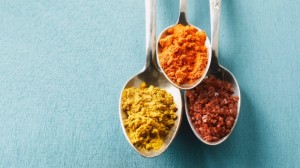According to Roberto A. Ferdman from the Washington Post, data crunchers have determined what makes Indian cuisine so irresistibly delicious. Any lover of Indian food will tell you about the robust flavor of nearly every dish, which is achieved by combining an array of different spices that possess differing flavor profiles. This is what differentiates Indian cuisine from that of the rest of the planet, according to scientists.
Flavors can be broken down into a variety of chemical compounds that give the whole its unique taste. One such compound is acetal, which, according to scientists, is is refreshing and gives off a fruity odor. It is found in a variety of foods such as orange juice, raw beets, and whiskey. There are about fifty of these flavor compounds, on average, in a single ingredient.
In many western cuisines, the common approach to creating a dish is to combine ingredients that have similar tastes. The researchers, who examined this food at a molecular level, would say that these components had overlapping flavor compounds. For example, there is a large overlap in roasted peanuts and peanut butter, as one would expect, and, more surprisingly, a larger overlap between strawberries and white wine.
Indian food, according to the researchers who conducted an analysis of more than 2,000 common dishes of the cuisine, is markedly different in this regard. There is little overlap between these flavor compounds in any single dish. For example, when cayenne, which often appears in Indian recipes, is included in a dish, other ingredients that are a similar flavor are not included. In all, the study examined about 200 individual components of dishes.
Ferdman notes that the biggest takeaway from this study is that there are a multitude of ways which to approach the building the composition of a dish and that none is more right or more wrong than the next.
